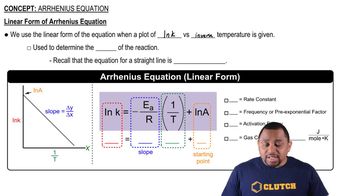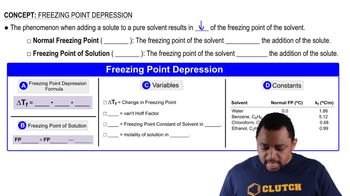Here are the essential concepts you must grasp in order to answer the question correctly.
Temperature Scales
Temperature scales are systems for measuring thermal energy, with common examples being Celsius, Fahrenheit, and Kelvin. Each scale has defined reference points, such as the freezing and boiling points of water. Understanding how to convert between different temperature scales is essential for solving problems involving temperature measurements.
Recommended video:
Linear Interpolation
Linear interpolation is a mathematical method used to estimate unknown values that fall within a range of known values. In the context of temperature scales, it allows us to determine the equivalent temperature on a new scale by establishing a linear relationship between the known freezing and boiling points of two substances. This concept is crucial for converting temperatures accurately.
Recommended video:
Linear Form of Arrhenius Equation
Freezing and Boiling Points of Substances
The freezing and boiling points of a substance are the temperatures at which it changes state from solid to liquid and from liquid to gas, respectively. For water, these points are 0°C and 100°C under standard atmospheric pressure. Knowing the freezing and boiling points of oleic acid is necessary to establish the new temperature scale and to find the corresponding freezing point of water.
Recommended video:
Freezing Point Depression




